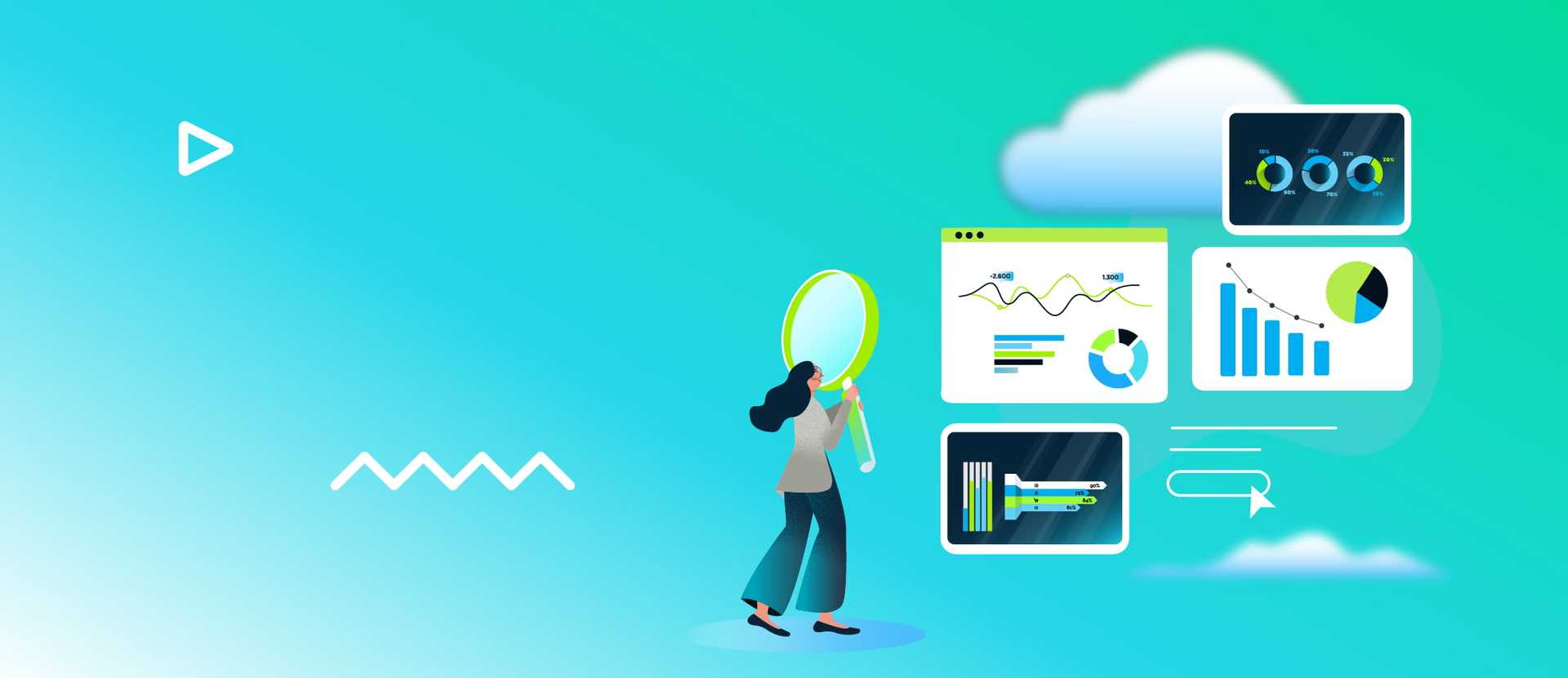According to a PLA report , more than 50% of respondents claim that UX for analytics is crucial. It is even more true regarding modern network solutions that require a clear visualization of massive amounts of data that can be utilized by users. Nevertheless, many companies still avoid investing their time and money in user experience. Why is that?
For the answers to these and more questions, we talked to Sebastian Janiec, a product designer at CodiLime.
Read further to learn more about Sebastian’s experience in product design for complex network solutions and his views on creating user experience for networks.
UX design is often associated only with designing the visual layer of an application. What does it look like from a product designer point of view? Is this myth still common?
Sebastian Janiec: Unfortunately, I have to say yes, but the Product Design and UX community has observed the situation is slowly improving.
The easiest way to show the importance of user experience is to share knowledge through practical education. Moreover, people who have already had direct contact with the design process see the real value and profits in UX.
Attending workshops or comparing scores that a product achieves after implementing Product Design team’s recommendations can help see the importance of UX in the big picture.
Another problem is that UX is often misunderstood as the user interface (UI). In that case, the UI will not meet business requirements even if designed according to best practices because it is not considering users�’ needs. The final product may look nice and can be completely useful, yet no one will want to use it because it will not provide any additional value for users.
At CodiLime, we focus on co-creating and developing various web and network solutions. Are preparations for the UX design process for this type of solution different from those for other applications?
SJ: Of course - they’re two very different stories! We consider each product and service individually, so the research methods or choice of metrics are adjusted to particular project needs. Even if we are talking about, at first sight, two almost identical network products that can work very similarly, we don’t use the same pattern as before.
The challenge often occurs at the initial stage due to a solution's exceptional innovation. For example, a characteristic of truly innovative solutions is that they often lack a user target group. When you don’t have any knowledge about the potential users of your solution, creating a good user experience is more difficult. Fortunately, for such occasions, we have in our toolkit an extremely effective process called the discovery phase.

Why is the discovery phase crucial when developing network products?
SJ: This phase is crucial in developing any product. However, when we’re talking about designing complex network products, the discovery phase is even more essential and helpful due to the application’s complexity.
Poor, or lack of, research means the whole work plan can be at fault. I'm not only talking about research work and design but even about solutions implementation.
As a result, unnecessary/less essential functionalities are implemented too early while the most critical ones are missed. Moreover, we can end up with too many corrections on every implementation layer, from the relatively less complicated frontend changes to redesigning the logic of the backend elements. Instead of seamless time-to-market and a product that hits the target, the team has to focus on fixing a non-functional product that must be repeatedly revised to meet expectations.
How does implementing the discovery phase help to work more effectively with the customer and avoid the problems that you’ve already mentioned?
SJ: A better understanding of business expectations, quicker validation of ideas and expectations, outlining of opportunities for the product, planning the product development path, and adjusting the success metrics – these are just the beginning of a long list of benefits from the discovery phase which spring to mind.
If I had to choose only one thing, why you shouldn’t overlook the discovery phase is that it allows us to establish the core value of a product or service for a well-defined user group. At this stage, we involve the client in the process more profoundly, and this is where our education through practice begins.
Often discovery allows us to unlock new development paths for a product we hadn't considered earlier - while working on development opportunities, we select those with the highest success rate and discard those that are not promising.

What is the biggest challenge when designing UX for network solutions?
SJ: Due to the innovative nature of solutions, there is often a lack of a solid target audience, and we have to wait until users arrive. That makes it more difficult for UX and Product designers to study users’ needs. In such cases, we make extensive use of our expert knowledge, and our CodiLime network engineers. They assist us from the very beginning of a particular project. This significantly shortens the design process and makes it easier to understand many points.
The other challenge is the intricacy of network systems. Many of them were created with the work logic focused on the command line. Developers and engineers focus mostly on providing a well-performing backbone of the product which will deliver every needed feature, and not always look ahead to what will happen when this backbone is fleshed out. This makes it more complex to combine it with UI and respond to specific user needs.
How can you deal with the abovementioned problem?
SJ: We always recommend an iterative approach, launching the product in MVP form to our clients. With an MVP we can check if the first version of the product is meeting users' basic expectations. Next, we can plan to develop and build the product with the support of analytical data flowing from actual use. At this stage, it’s essential to install analytical tools as soon as possible. We can wait to use them later after installation, but when the time comes, we will already have a sizable database.
Thanks to this approach, we can study the funnel for particular functionalities or even check how the product promotion is going.
Sometimes, when installing analytics, some security hurdles can appear. Nevertheless, please do not give up on this idea – it's worth analyzing the available tools and choosing one that meets the requirements.
Continuous research allows for better control of the fit with user expectations. When we add to research using metrics like customer lifetime value we can make the product a relevant tool for the recipients for a long time.
One of our company values is "Team up to win." How does this principle look in practice during daily work?
SJ: I believe that answer to that question lies somewhere between the lines above. One of our greatest assets is the proper selection of specialists. They not only make the organization better with their skills, but what is more important, they identify with our values. We work with great specialists who are always willing to help and share their knowledge. The support with which they provide us allows for delivering projects at the highest technological level without compromising on the user experience.
I really appreciated our process based on an incredible amount of constructive feedback within a team, which perfectly illustrates our other value of "Disrupt to grow." I see my projects getting better and better, and I’m gaining a broader perspective, constantly learning from my teammates.
What is the most significant "superpower" of the CodiLime product design team?
SJ: There isn't a specific one, but if I had to choose, I would bet on years of experience in the area of network solutions.
What have these years of working with different network products taught us and what can we do in such cases?
We can solve some product issues almost immediately. We know where to look for information and support, and we can use previous research results and draw on a historical base of ideas. At this point, we are able to propose solutions that positively impact the product development path from the early stages. Moreover, as a team, we can solve problems on the spot or even prevent them from occurring.
Here, you can check our product design and development services.
Do you remember any particular situation when the processes you’ve gathered helped solve a problem faster or prevent it entirely?
SJ: Sure, in one case, the client didn't opt for a discovery phase and chose only a visual redesign of their product and the current design of various functionalities. There we faced a lack of a proper development path, common and coherent vision, and clear roles for the client’s internal team.
However, thanks to establishing a fast communication path between our Product Design team and the client’s engineering team, we quickly verified the project’s assumptions were too broad for the extensive functionality.
After this exercise, the client abandoned implementation at all costs and decided to save costs connected to implementation works that, as it turned out, would have been largely unnecessary or unprofitable.
The last question: what advice would you give to a UX designer who wants to enter the world of network solutions? What do they need to be prepared for?
SJ: The most important piece of advice - you are not and probably never will be a network engineer who designs interfaces (but some people see them as that). Don't be afraid that you won't be able to answer complex questions – nobody can until we know what the functionality is and how it should work. Remember that you have the support of colleagues who are willing to share their knowledge.
While designing the network product, you should be aware that the enormous amount of data and the twists and turns of network issues can present challenges to the user. For these reasons, above all, the product must be functional, and next it can be aesthetically pleasing.
Remember that designing and developing network products allows you to enjoy creating exceptionally functional products that visually are maybe less fancy designs compared to, say, Dribbble, but make someone's work so much easier.
—
Sebastian Janiec, product designer, started his design journey studying graphic design at university. After graduating, he gained experience in UX design with numerous web and digital product design projects.
Currently, at CodiLime, Sebastian takes care of network companies. He is an expert in the following fields: product design and discovery, product analytics, and UX product management courses and training.
Sebastian is happily married, a father-of-two, and developing his lifelong project – a never-ending renovation of an old house to align with his most valuable users’ (family ofc) needs.
![Esthetic or functional? The essence of product design for network applications [interview]](/static/b4df450d03b10e2693187d3f5158b6bf/product-design-for-network-applications-header.png)



